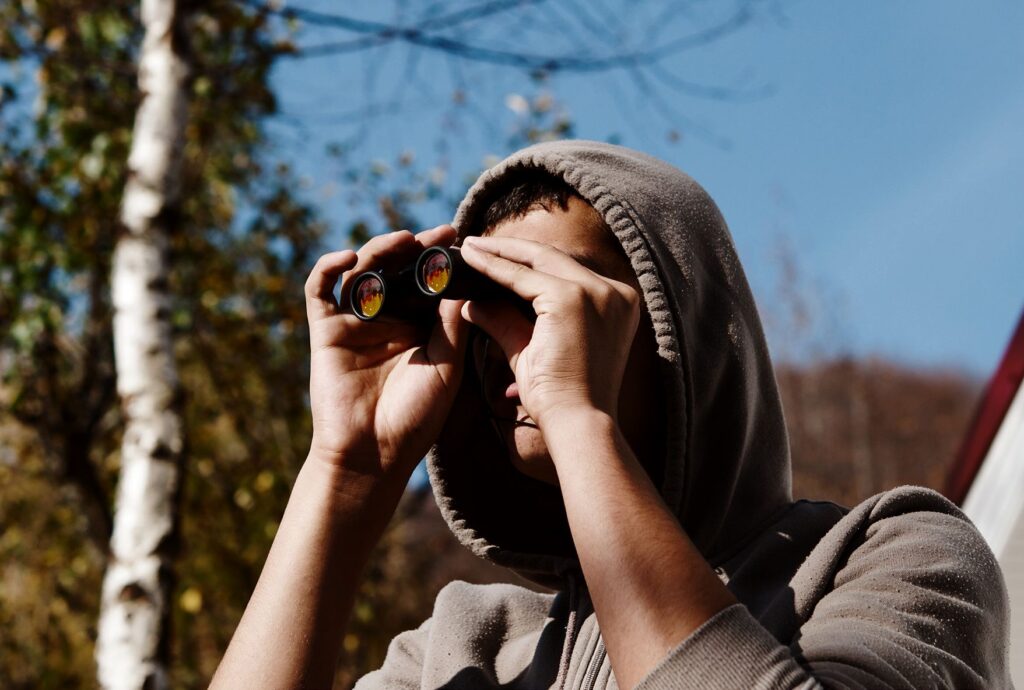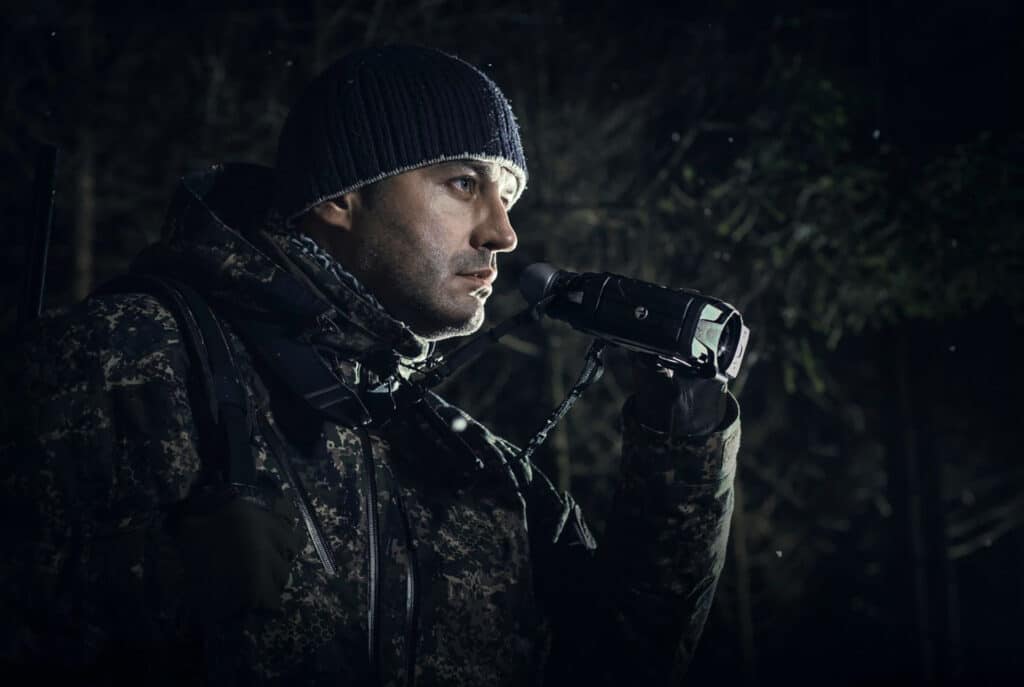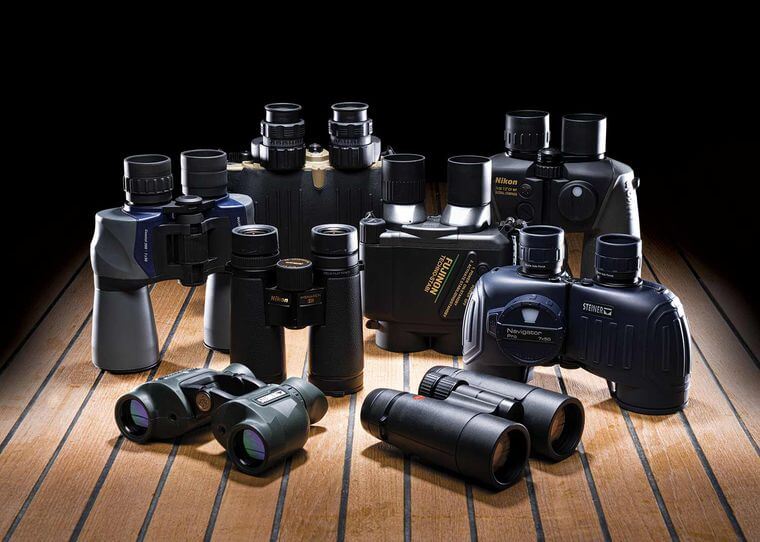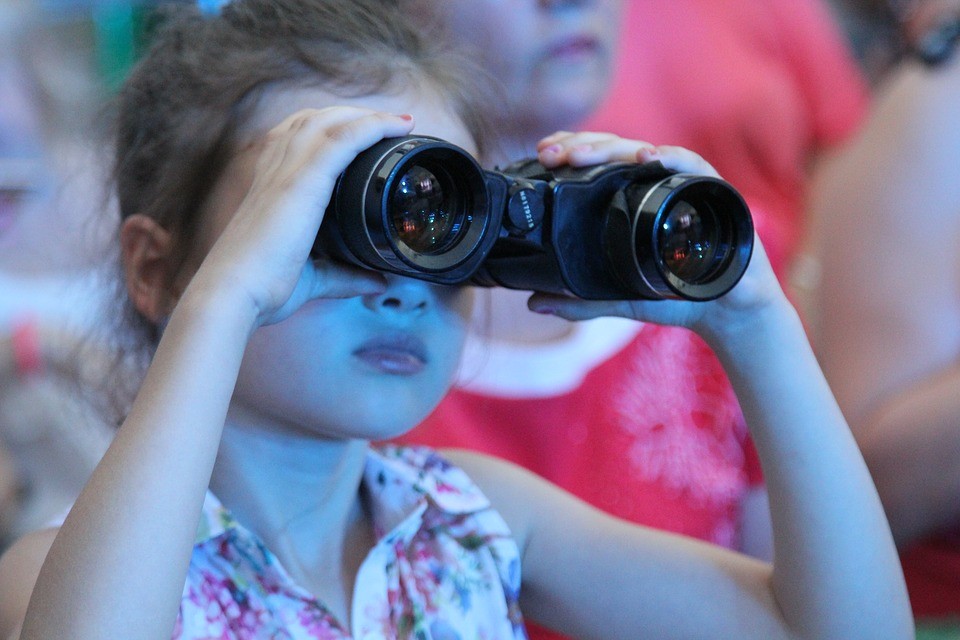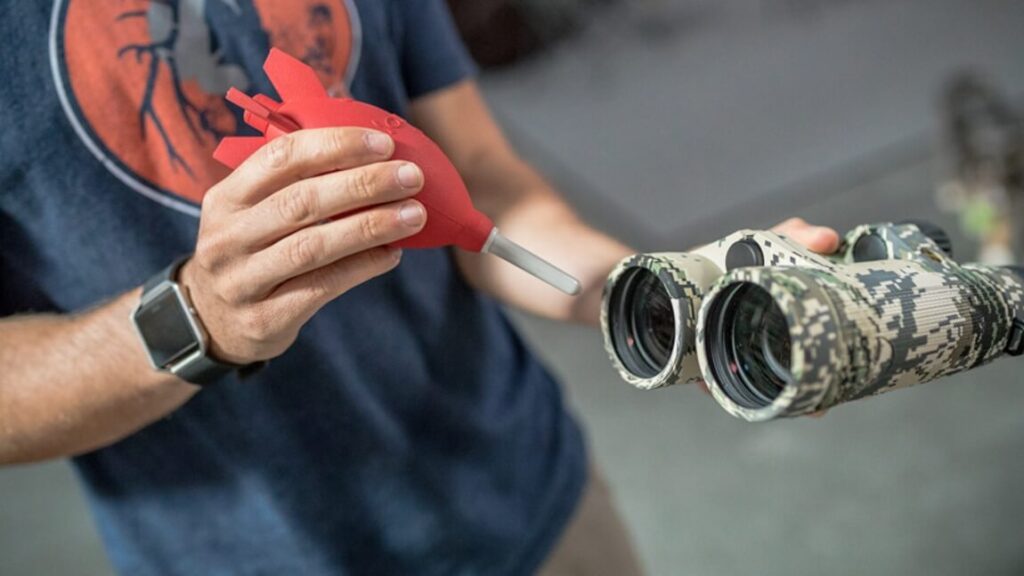

Whether you are just starting in this beautiful hobby or lifestyle or obsession – bird watching, or you are a famous ornithologist looking to renew your equipment. In this article, we are going to discuss how to choose binoculars for birdwatching, commenting on some basic elements and other not-so-much about binoculars Trusted Source Binoculars - Wikipedia Binoculars or field glasses are two refracting telescopes mounted side-by-side and aligned to point in the same direction, allowing the viewer to use both eyes (binocular vision) when viewing distant objects. en.wikipedia.org . What does each mean number and code inscribe on them mean? Which are the things to prefer and things to avoid? Read through this article for a crash course on binoculars.
Binoculars, also called twins, is an optical instrument used to magnify the image of objects that are at a great distance. They have the same function as a monocular or a telescope, but with the difference that they are more comfortable to appreciate the distance between distant objects and follow them in motion. There are numerous types of binoculars: night vision, theatre, stabilized, military, rangefinder, powerful, professional, modern, intelligent, with a camera, digital, shockproof, for astronomical observation, long-range, concert, spotting scope, kids, thermal, travel, excursion, navigation, ergonomic, spotting scopes, with tripods, with HD vision, small, adult binoculars, bird watching, hunting and many more. However, the focus of this article is binoculars specifically for the purpose of bird watching.
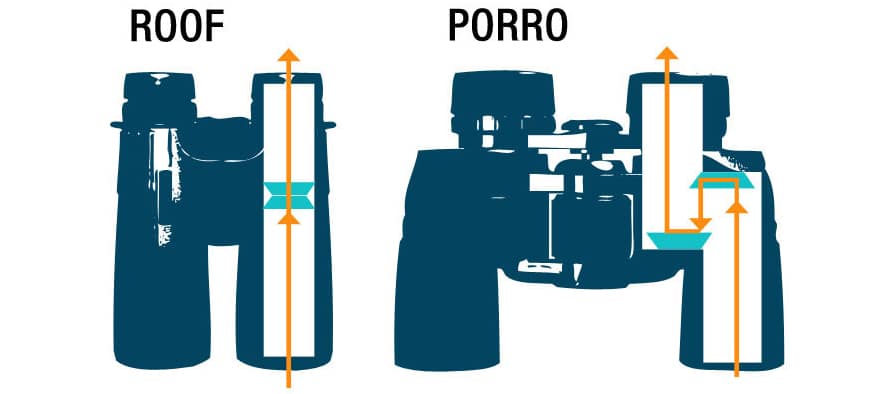
There are mainly two types of binoculars, the Porro and the Roof:
The Porro or binoculars in M – have an optical design with prisms that reflect light inside in a zig-zag or Z shape; this avoids loss of light through glass or coatings, they are generally cheaper to manufacture but they are more big and heavy than the Roofs.
Their characteristics include;
The Roof or binoculars in H – have an optical design with crystals that increase the image in a linear way; they are generally more expensive but lighter and smaller than the Porro. In addition, they usually have a more prepared environmental seal.
Their characteristics include:
If you have a tight budget, and you will not take the binoculars out into extreme conditions of humidity or heavy rain, Porro-type binoculars are recommended since, for not much money, you can get very bright and very good quality optics. On the other hand, with a higher budget, if you travel a lot, want something resistant to rain and bad weather conditions, and think about breaking the pig, Roof-type binoculars are the way to go. You will have binoculars with excellent image quality, more compact, ergonomic, and more resistant than the Porro ones.
Binoculars have two numbers, for example, 8×42, 10 × 50, 7 × 35. The first number corresponds to the magnification of the image and the second to the diameter of the front lens.
When we speak of magnification, we refer to the number of times the observed object will bring us closer to each other. To know the range, we will have to divide the distance at which the bird is, for example, 30 meters by this first number, in this case, the count will be 30/8, which gives us 3.75; that is, we will see the bird as if was within four meters. As a general rule for bird watching, it is suggested that the magnification be not less than 7 and not greater than 10. With higher magnifications, the Field of view decreases, images will be less bright, and the image begins to move to require the support of a tripod. Zoom binoculars are not recommended, neither those of night visibility.
The magnification is usually between the 7x and 12x ranges in a large number of binoculars, and the diameter usually varies between 25mm and 56mm. 8x and 10x magnifications are usually recommended for birds: 7x and 8x magnification binoculars: They are recommended for close-up sighting locations, such as forests and jungles, with sub-optimal light conditions. They are also usually recommended as the first binocular since having less magnification, and it is possible to stabilize the image more easily and obtain more detail from the birds. In addition, they generally have a wider field of vision, which allows us to find birds in adverse conditions and to follow them more easily.
10x magnification binoculars: They are recommended for long-distance sighting places, such as wetlands and lagoons, with optimal light conditions. By having a closer approach, the trepidation (involuntary movement) is greater, and it is difficult to obtain greater details of the birds.
Closer than 10x is not recommended, as the image tends to shake too much, which makes it more difficult to obtain details of the birds. However, there are binoculars with image stabilization, which allow you to control shake and restore details.
There are also binoculars with variable magnification or “zoom,” which allow changing the magnification with a wheel. They are usually indicated with standard numbers: 7-12 × 50 (Magnification between 7 and 12, with 50mm in diameter). They are not fully recommended anymore. They often suffer from optical compromises to deliver the zoom.
Binoculars with magnification of 8x or 10x are most recommended. However, if you like to observe large groups of birds in a lake, choose binoculars with 10x magnification. If you prefer to walk along routes and observe the birds that cross your path, we recommend binoculars with 8x magnification.
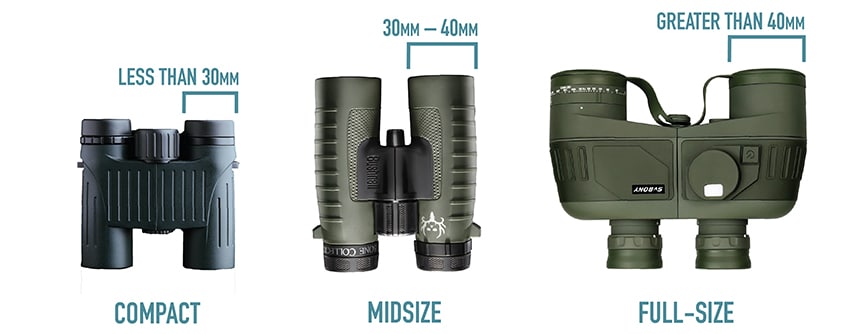
The second number on a binocular, which from our previous example is “40”, refers to the diameter of the lenses, and this has to do with the capture of light, the larger the diameter, the better the capture of light, and this will allow us to observe better details. For shady places like jungles or forests, this is very important. As the diameter of the lens decreases, the brightness becomes less, and the angle of view or Field of view narrows. It should be added here that binoculars with 50mm lenses are usually quite heavy, although the more expensive brands currently use lighter and stronger materials. It will then be necessary to evaluate the average between distance and luminosity; this is called “exit pupil,” this is done by dividing the diameter by the magnification.
The diameter will indicate the amount of light that enters the optics: the larger the diameter, the more light enters the binocular and, therefore, the brightness of the image. This is of vital importance in low light conditions since in full sun, and the differences are not appreciable by the human eyes.
As the diameter is a physical measure, larger diameter binoculars are larger than smaller diameter ones. The most common diameters for Porro (M) type binoculars are 25 and 50mm, the smallest being 17mm and the largest, the non-negligible figure of 150mm, the latter being for astronomical use.
The 25mm ones are a great option for those looking for compact, high-performance binoculars in daylight, while the 50mm option is often recommended for those looking for a “complete” binocular, which provides good performance in good light and bright light.
For Roof (H) type binoculars, the most common diameters are 25 and 42mm, with the smallest being 15mm and the largest being 70mm, again for astronomical use.
The 25mm ones are once again a great option for compact binoculars, this time even smaller than the Porro type. They are highly valued among travelers, backpackers, and cyclists for their lightweight and small size in the suitcase. Meanwhile, the 42mm are the “standard measure” used by the large percentage of spotters for their daily use binoculars. They offer you the perfect balance between lightness and size. If you are going to do very long routes and you are looking for very light binoculars, choose 32 mm ones. You will notice the lack of light on very cloudy days, first thing in the morning and late in the afternoon.
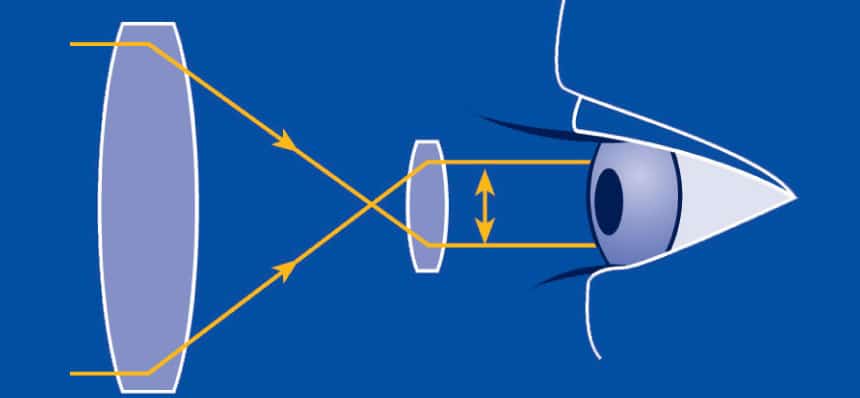
The exit pupil diameter of binoculars is defined as the ratio of its diameter to the magnification. For example, for 6×30 binoculars, it is 30: 6 = 5. The optimal ratio is considered to be close to the diameter of the pupil of the human eye (7 mm).
To understand this parameter, it is necessary to take into account the physiology of the human eye, and specifically the human pupil. For example, consider a 10×50 binocular. In it, the exit pupil will be 5 mm. This means that when light passes through the binoculars, a luminous flux with a diameter of 5 mm is formed at the exit from the eyepiece lens.
At the same time, the human pupil changes its diameter depending on the level of ambient light. It can range from 1.1mm in high ambient light to 8mm in low light. The ideal situation would be the correspondence of the exit pupil of the binoculars and the diameter of the pupil of the eye, but this situation is not always possible due to the constant changes in the diameter of the pupil of a person.
All well-known birdwatchers adhere to the rule that 4 mm is enough for birdwatching. But suppose we are talking about working in dense forests, caves, as well as when observing owls at dusk or in the light of the moon, and in general everywhere where there is generally little light. In that case, it is better to think about a model with an exit pupil of at least 5 mm.
We just told you that the bigger the targets, the brighter the images you will see with your binoculars, but it is only half true.
The design and optical quality also influence the brightness of the binoculars.
Some binoculars with a large aperture but with poor optical components will be less luminous than others that are smaller but have good optical quality.
Large lenses will capture a lot of light, but if the optical quality is poor, all that light will be lost along the way and will not reach your eyes. You will have dark images with chromatic aberrations.
To improve the transmission of light, chemical treatments are given to the lenses:
It is advisable to Choose binoculars that are at least multi-coated. Ideally, the lenses are fully-multi-coated. Next, the quality of the lenses themselves is also important. For example, the ED (Extra-Low Dispersion) and HD (High Density) lenses reduce chromatic aberrations and offer bright images with exceptional contrast.
Binoculars come with an endless list of details that we need to handle, here are some of them:
The most common are BAK4 and BK7. The latter are cheaper to produce and have a lower refractive index; that is, they are more prone to losing light in internal reflections, so it is always recommended where possible to choose binoculars with BAK4 glass.
The Field of view is the width of the image you see through the binoculars. You will see it in the technical specifications of the binoculars in degrees (6º, 7º, 7.5º) or in meters (the meters across that you see at 1000 meters away). It is usually indicated as follows: 115m @ 1000m, which means that you can see 115m of the area when focusing at a 1000m distance.
With a wide field of vision, you will be able to locate and follow animals more easily. You don’t necessarily need an extremely wide field of view, though. Note that:
It is recommended to choose binoculars with a wide field of vision but without putting them before other aspects.
Depth of Field is the range of distances to the target in which it is not necessary to change the adjusted focus. It is not indicated in the parameters of binoculars as an indicator, but it is important to take into account that it decreases with increased magnification of the binoculars.
They are two fundamental factors that will make you want to use binoculars and take them on your routes. With light binoculars, your arms will not tire when using them, and you will be able to walk comfortably during your excursions. It is recommended that you do not choose binoculars that weigh more than 1 kg. Choose binoculars that are easy to hold, feel good, and easy to use.
Minimum focus distance: This value tells us how close we can focus with the binoculars. This can be crucial if among the uses that we want to give the binocular is the sighting of insects, reptiles, or flowers.
Eye relief: It is the optimal distance to the rear element in which you will be able to see 100% of the image. This distance is important if you are a spectacle wearer since an eye relief greater than 17mm will allow you to see the complete image with glasses on.
Keep in mind that the binoculars will be used in nature and that it is very likely that they will hit a rock or start to rain at any moment.
To protect binoculars against possible shocks, they are usually covered with rubber (it also improves grip), and the housings are made with resistant materials.
It is increasingly common for manufacturers to use magnesium alloys (the lightest and strongest of all) and aluminum alloys. Binoculars are usually sealed to prevent rainwater from entering (sealing is discussed in detail below). The best binoculars are resistant to water, fog, dust, and sand. They are also purged with nitrogen to prevent the lenses from fogging up with changes in temperature. These binoculars are resistant to fog.
If you choose resistant binoculars, you will have long-lasting binoculars.
As we mentioned previously, Roof-type binoculars usually have a higher quality environmental seal since they are usually filled with a special low-refractive gas, which -in case of leakage- will cause a loss of the optical qualities of the binocular. Generally, binoculars are weather-proof; that is, they withstand rain and dust; however, not all of them are waterproof, that is, resistant to being submerged in water.
It is not something crucial, but it is important to take this into consideration when buying binoculars, to understand what care we should take with them. In any case, it is recommended not to expose them too much to seawater, sea breeze, or sand since the Small particles can scratch the windows or get into moving areas and affect their proper functioning.
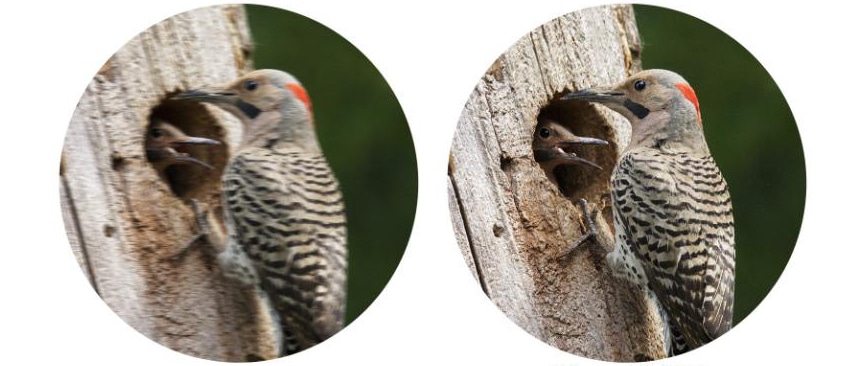
Some binoculars offer the ability to stabilize the image using motion sensors and moving prisms. They are really useful if we do not have a good pulse or want to have a greater range without having to resort to a telescope or tripod.
It is the minimum distance at which the binoculars are able to focus. Many binoculars have a close focus of 3 or 4 meters, and it is perfect for bird watching and for seeing nature in general. But if you want to see butterflies, dragonflies, and other insects, make sure your binoculars can focus from 2 meters away.
According to the internal structure, binoculars are divided into binoculars with a prismatic and lens turning system, but the latter is practically not used in modern binoculars since it requires a longer length of the telescopes. The most commonly used prismatic wrapping system was proposed by the French optician Porro.
In addition, in modern binoculars, wrapping systems with special prisms that have a “roof” are often used, that is, two faces located at right angles to each other and similar to a gable roof.
The central focusing method is a universal method of focusing. It allows you to quickly bring the binoculars into focus, observing, for example, a moving object. However, split focus binoculars are more reliable. In addition, they provide better conditions for people with significantly different levels of vision in the eyes. Some of these binoculars have divisions for focusing in accordance with the level of vision: so that a person, knowing the diopter of their eyes, can immediately adjust the eyepieces. Binoculars with center focusing sometimes have a mechanism for adjusting the eyepieces to adjust for different eye diopters.
There are also focus-free and autofocus binoculars, which, as a rule, provide not very high image quality but are convenient for situations in which long adjustments are impossible, for example, for firefighters or rescuers, as well as for observing a rapidly moving object.
Removal of the exit pupil is the distance to the eyepiece at which the binoculars can be focused. With a distance of 18-20 mm, observation can be carried out with glasses or, for example, in a gas mask. For ordinary binoculars, this distance is 10-12 mm. Binoculars with the removal of the exit pupil can be used without glasses: the eyepieces are “extended” with soft plastic rings.
Night Vision – Night vision binocularsform a separate group of devices that use infrared radiation. An additional important characteristic for them is the continuous operation time of the power supply. The presence of IR illumination for working in extremely dark conditions is essential and a protection system in case of accidental activation in bright light.
Apart from binoculars, there are monoculars. For those looking to have something lighter and more compact still, they are usually preferred by mountaineers and climbers due to their portability. However, they can be exhausting on the eyes after long periods.
Another option highly desired by birders are ground-based telescopes or “scopes,” which provide greater magnification (They are usually between 11x and 40x) so that more details of the birds can be obtained, and they offer the possibility of observing at a greater distance. , when used with a tripod, the image is stable, and also, they allow “sharing” what is being seen, since by fixing the tripod at a point, many people can go by and see the same thing that was seen in the beginning.
Where can I buy binoculars?
The good thing is with the advent of the internet; you don’t need to go to a physical store to get binoculars; you can go to an online store to get one. To make an informed choice about the best binoculars out there in the market, check out the best binoculars for bird watching here and those for wildlife viewing here.
Binoculars come in different prices and sizes, and the models vary widely. You can check out the list of binoculars under $200 here. The Zeiss Conquest HD 10×42 Binoculars is a great model that our experts highly recommend. But roughly, you have to separate the binoculars into ranges;
In most scenarios, the optical differences between binoculars in the same range and even in contiguous ranges are negligible and only noticeable under certain lighting and weather conditions.
It depends on each case, but with binoculars, you usually pay for what you get. A more expensive binocular will most likely give you higher quality crystals. This translates into better image quality, clearer image, better response to light reflections, less chromatic aberration, more realistic colors, etc. Also, the manufacturing materials vary, with a more expensive binocular having qualities such as resistance to the passage of time and adverse weather conditions and other characteristics such as greater Field of view, closer focus distance, greater eye relief, etc.
It is important to understand that there is no perfect binocular. Instead, there is the ideal binocular for every pocket and situation. The Celestron Nature DX 10×32 Binoculars is an affordable pair of binoculars for birdwatchers seeking affordable but quality binoculars options.
No, our eye is unable to take advantage of the extra light generated during the day. To calculate this, we need to know that our pupils during the day are usually between 2 and 4mm in size, while in the dark, they can dilate up to 8mm. To calculate the size of the image in our pupil, we must consider the diameter of the front lens, for example, 42mm; and the magnification of the binocular, for example, 8x.
We will divide the diameter by the increase, that is, 42mm / 8, which gives us a value of 5.25mm; that is, an 8×50 binocular allows us to take advantage of the light even when our pupils are dilated to 5.25mm. If it is very dark and our pupils dilate more, we will not be able to take advantage of that light, and if it is very clear and our pupils are only 3 or 4mm, we will only receive 3 or 4mm of light.
Yes, and the larger the front element’s diameter, the lighter we can capture at night. However, there are binoculars that are especially suited for astronomers. And always remember: you must not see directly at the sun with your binoculars!

To summarize, to choose binoculars for bird watching;
You can see for yourself that there are a number of characteristics for choosing a good, high-quality ornithological binocular. Of course, not all of them need to be followed inside and out. For example, if the case is without rubber inserts, but otherwise, many people really like the model, then nothing should prevent you from purchasing it. You can close your eyes to some shortcomings.
On the other hand, do not rush to buy. It is better to get enough opinions, reviews, advice. But remember that when choosing binoculars for bird watching, it is advisable to seek advice from a professional bird watcher. Sailors, hunters, naturalists, and travelers also use binoculars. But in reality, they value slightly different qualities from this optical device than those who like watching birds from an ambush. Reading through this article, you should have learned how to choose binoculars for birdwatching, order them today and start sporting.
